Saving newborn kittens in Los Angeles
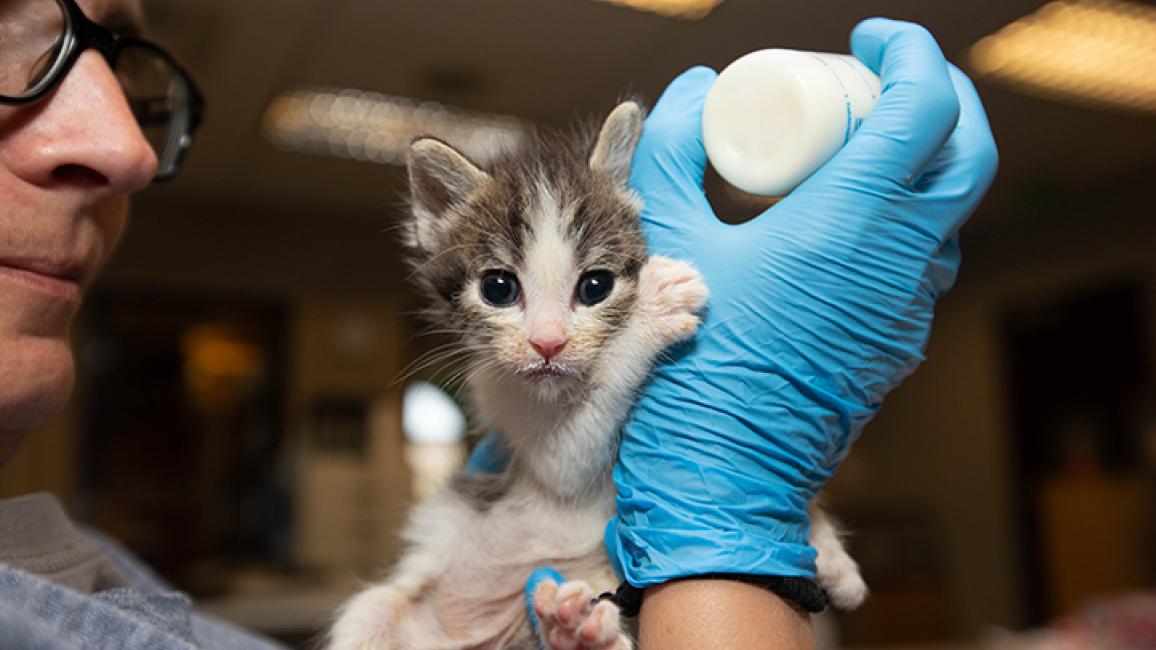
When Sherry Xi and her daughter Stephanie, volunteers at the Best Friends Pet Adoption and Spay/Neuter Center in Los Angeles, heard about the great need to save more newborn kittens in Los Angeles, they immediately signed up to foster.
Sherry and Stephanie were interested fostering kittens, but because they had never cared for such young lives before, they worried about not having the necessary skills. Meanwhile, very young kittens were arriving at Los Angeles Animal Services by the dozens every single day. In fact, kittens dying in L.A. city shelters is the one pet demographic preventing the city from reaching no-kill. And it’s why Best Friends and our No-Kill Los Angeles (NKLA) coalition partners have been focusing on cats and kittens.

The Best Friends kitten nursery is a big part of the effort, and foster homes make it possible to save so many more lives. Holding several “Clear the Nursery” events throughout the summer is encouraging more and more people to step up and help.
The importance of kitten foster volunteers
Sherry and Stephanie signed up for the event to get hands-on experience bottle-feeding kittens, help from the nursery staff, and all the necessary supplies to care for their baby kittens.
“There is a critical need for kitten foster volunteers,” says Elizabeth Pashley, the center’s volunteer engagement manager. “The more kittens we can place in foster homes, the more we can take in from the city shelters.”
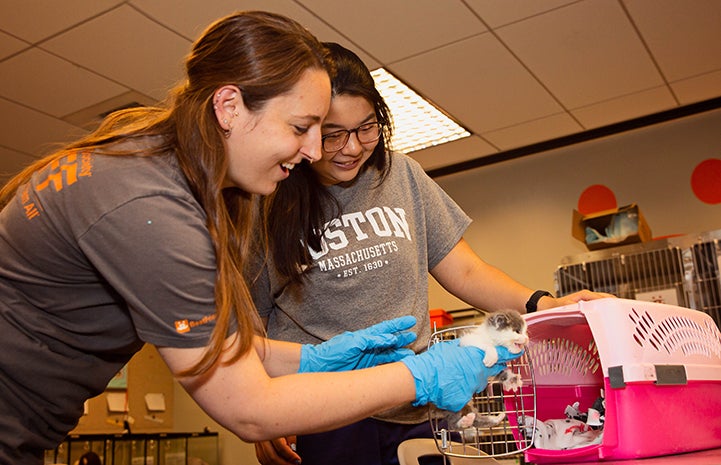
The kitten season, which starts around March in Los Angeles, is when the city shelters fill up with orphaned newborn kittens and some nursing mothers. It would seem reasonable that a city shelter would be the best place to take the baby kittens. But L.A.’s large city shelters are like many others around the country. They simply do not have enough space or resources to care for them for up to two months until they’re big enough for spay/neuter and then adoption.
That’s why the kitten nursery is so critical to helping L.A. becoming a no-kill city, and why fostering kittens is so important, too. Without these two critical elements, kittens dropped off at shelters might miss out on their chance to grow up in a loving home.
Helping L.A.’s youngest homeless animals
Since the kitten nursery opened in 2013, staff and volunteers have worked hard to give more than 12,000 kittens a second chance at life.
At its full capacity, the nursery can care for up to 150 kittens at a time, with staff and volunteers working around the clock to feed them and monitor critical factors like their body temperature and weight.
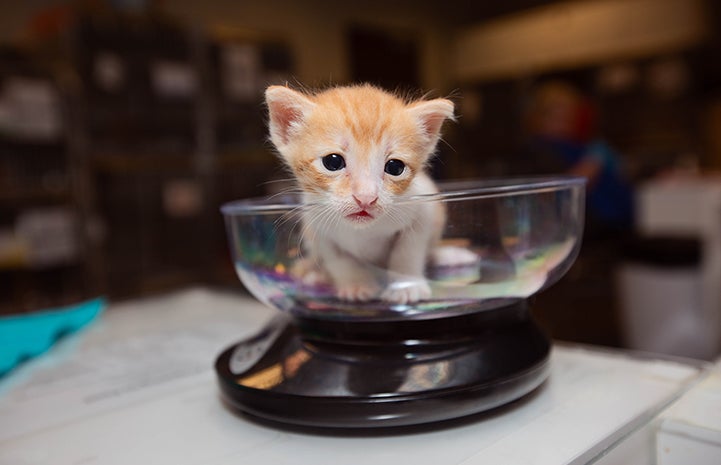
Foster homes make it possible for the nursery to help more kittens by freeing up space so more kittens can come in from the shelter. They help older kittens who are eating on their own become more socialized to people. And baby kittens needing bottle-feeding can thrive in a home with a foster volunteer trained on how to care for them.
Every time a kitten goes to a foster home (regardless of stage of development), space at the nursery is created for another kitten from the city shelter. “We can never have too many foster volunteers,” says Elizabeth. “It is one of the most important parts of the kitten nursery.”
Learning how to care for newborn kittens
The center’s clear-the-nursery events were designed to recruit new volunteers who want to foster kittens. They meet with nursery staff who teach them how to care for their foster kittens and how to tell if a kitten needs emergency medical care.
The foster volunteers get plenty of hands-on experience on bottle-feeding, and when they leave they are given travel carrier, bottles, a heating pad and other supplies. They also get set up with plenty of support at home with a 24-hour emergency number to reach Best Friends staff, and help from Maddie's® Pet Assistant. It's a free mobile app that not only helps foster volunteers track kittens' weight and provide them with expert advice, but they can also submit photos and adoption bios as they get to know their kittens, which helps them get adopted when they're big enough.
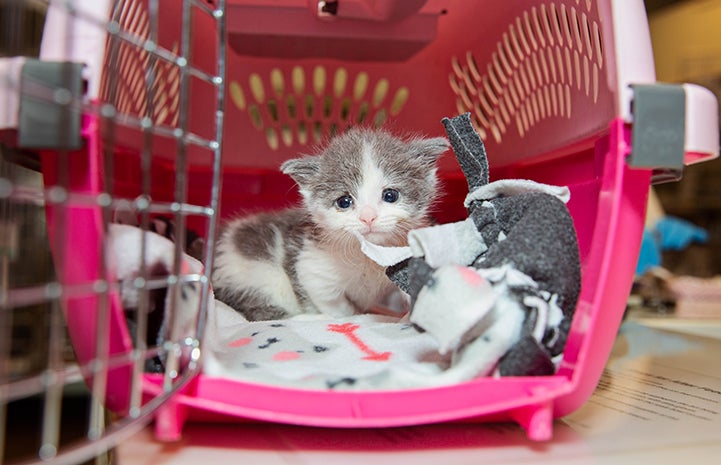
Then comes the very best part — meeting and taking home one or more adorable tiny kittens.
Newborn kitten care is a lot of fun
After learning how to care for newborn kittens, Sherry and Stephanie took in a kitten named Nassarose, who had been surrendered to an L.A. city shelter when she was just days old. At home they made sure to follow the instructions from the kitten nursery staff, and today, Nassarose is happy and thriving.
They’ll keep Nassarose until she’s big enough to be spayed. Then, after her surgery, she’ll be ready for a home of her own.
“We loved helping,” says Sherry. “And we are also very happy to have Nassa here, because she makes our life more fun, too.”
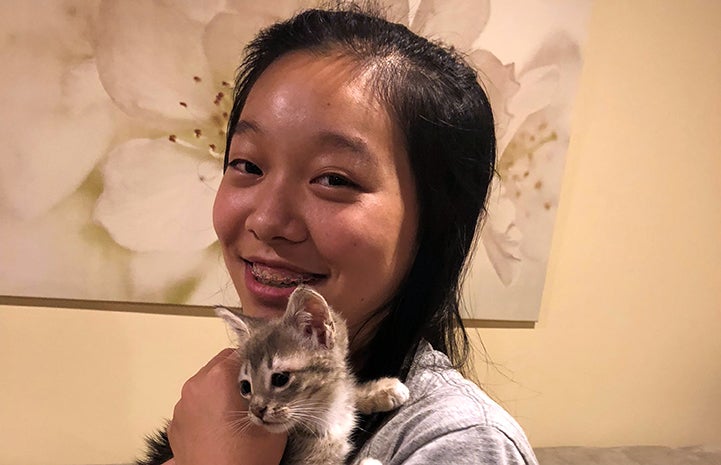
Giving neonatal kittens a second chance
When Elizabeth talks to people interested in fostering kittens, she likes to remind them that if they don’t have the time to commit to bottle-feeding newborns, they can still make a big difference by fostering kittens already eating on their own. And she likes to remind them of the bigger picture, too.
“I tell them that by helping give a kitten a chance, they are saving more than one life, because another kitten will get the chance to leave the shelter.”
You can save a life today. Foster a pet.
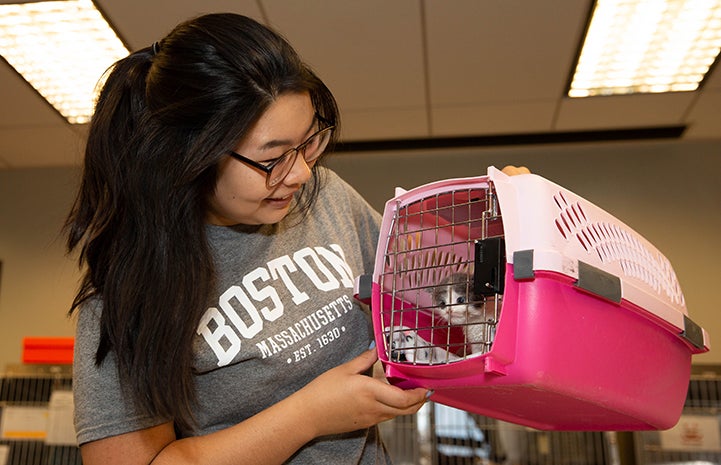
Photos by Lori Fusaro and courtesy of Sherry Xi